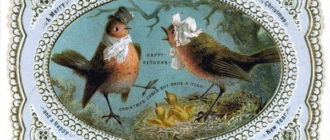
“Napoleon Bonaparte on the Arcole Bridge” is a painting by the genius French painter Antoine-Jean Gros, which marked the beginning of a series of works glorifying the Emperor of France as a successful military leader.
Painting “Napoleon Bonaparte on the Bridge of Arcoles” by Antoine-Jean Gros the beginning of the Napoleonic epic in art
The work is dedicated to the episode of the battle at Arcole, when Bonaparte, under enemy fire, grabbed the banner and, captivating the soldiers with his courage, rushed into the offensive. His majestic figure in a ceremonial uniform towers over a landscape barely distinguishable from smoke. The nature in the background is depicted in dark colors, which enhances the drama of the moment.
The image of Bonaparte is idealized by the artist, filled with a feeling of romantic uplift. The hero’s straight nose, his strong-willed chin and tightly compressed lips are clearly marked. The look expresses the concentrated confidence and determination that the person making the last shot has. On the commander’s saber, the text is written: “G1. Bonaparte. Armée D’Italie On the belt buckle, the monogram “BLP” is visible, denoting the first letters of the names of the hero and his wife. The composition is built in a tense rhythm that creates the feeling of an upward movement. Dynamism is emphasized by the color scheme of the masterpiece, the intersection of multidirectional diagonal lines, contrasting transitions of light and shadow.

Author: Antoine-Jean Gros (1771-1835).
Year of writing: 1796-1797
Size: 130 x 94 cm.
Style: Neoclassicism.
Genre: Portrait.
Technique: Oil painting.
Material: Canvas.
Location: Palace of Versailles (fr. Château de Versailles), France.
About the artist
Antoine-Jean Gros is the brightest representative of European painting of the 18th 19th centuries, battle painter, official portraitist of Napoleon. The painter accompanied the commander on his military campaigns, which made it possible to realistically depict battle scenes.
The painting was commissioned by the emperor himself. The master managed to embody the ideal of a strong, strong-willed personality. Copies of the masterpiece were created at the same time. One of them, 134 x 104 cm, was located in St. Petersburg. After the revolutionary events in Russia and the transfer of power to the Bolsheviks, the work was expropriated and transferred to the State Hermitage.

Another version of the painting by the genius battle-painter measuring 132 x 95 cm was once the property of Bonaparte’s stepdaughter, the Dutch queen Hortense de Beauharnais. This piece is currently housed in the former Swiss residence of the Queen, Arenenberg Castle. After the transfer of the castle, along with the property to the state, a museum was formed within its walls, dedicated to the activities of the leader of French military history.
The painting “Napoleon Bonaparte on the Bridge of Arcola” by Antoine-Jean Gros reflects the tumultuous and dramatic events at the turn of the century and conveys the harsh poetics of war.






